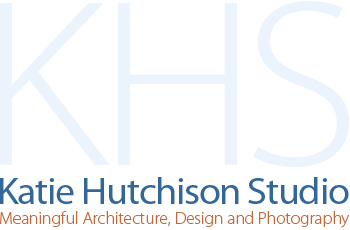Rationalizing the intuitive
“Art for Our Sake” in last Sunday’s Boston Globe touches on one of my favorite subjects. Ellen Winner and Lois Hetland make the case for art education. The authors are researchers at Project Zero at the Harvard Graduate School of Education, and they’re college educators elsewhere in Boston. They conducted a year-long study of five visual-arts classes taught at two schools in the Boston area: one public and one private. Their findings? Studying art fosters creative and critical thinking. Bravo. But isn’t that common sense? Well, apparently not.
For better or worse, often what we think we know intuitively requires rational evidence in order to convince others, and perhaps even ourselves, that our intuition is in fact sound. Rationalizing intuition and intuiting the rational is also at the crux of what architects do. We couldn’t do it without a sound background in the arts. I have often opined that everyone should go to art and architecture school. Short of that, I’ve made it my mission to share with you in these magazine postings some of what I learned there and how to apply those lessons to the built environment.
eight creative skills
According to the “Art for Our Sake” article, art education trains students to develop eight skills or “studio habits of the mind”. The first, and most obvious, is artistic craft. The others are: persistence, ability to communicate expression, recognition of the connection between schoolwork and the work of the world, observational acuity, capacity to envision, innovation through exploration, and reflective self-evaluation.
To my mind, these skills augment and reinforce similar skills typically developed via different means: through the study of words, in English class; numbers, in math class; and both words and numbers in science class. For that matter, sports, may be yet another register upon which to develop many of these “habits”. They are essential life lessons that often reach different people differently, depending in which medium they are more comfortable working. Most of us are not equally receptive to art, reading/writing, math, science, and sports. Even for those who are, discovering how a concept can be translated across disciplines only further clarifies its essence. I’ve found that an interdisciplinary approach in school and professional life makes for a richer experience in both.
rigorous process
For me, the study of art and architecture opens up new ways of seeing, illuminates new connections between ideas, and nourishes my need to understand. Until I enrolled in art and architecture school, I didn’t know what my thinking was missing. When I first started at the Rhode Island School of Design, I was an older student with a liberal arts background. I had achieved a certain facility with words as well as numbers, and was fairly undaunted by the prospect of taking on a new field of study.
Then after only a few weeks of immersion in my first architecture studio, my assumptions were challenged at every opportunity. Suddenly it was no longer clear what was up and what was down. My intuition proved unreliable. I was required to defend my designs. To rationalize them. Why was there a wall? Why did the building sit on the ground, not in it, not above it? What was the meaning of including the plan drawing on the page with the enlarged detail? Similar questions were asked in my life drawing class. Is the foot in the foreground really that small in relation to the rest of her body? Is that really where her ear is? Why is she floating in the corner of the page?
I was challenged to reconsider things I thought that I had long known. It was my most difficult academic undertaking to date. It was also the most rewarding. It introduced me to a rigorous process which I continue today, designing and analyzing three-dimensional form and two-dimensional visual expression, allowing each to inform the other and the way that I think. In years of study and practice I’ve created a visual foundation on which to build my aesthetic intuition, which has in turn allowed me to translate the aesthetically intuitive to the rational in order to design. (You might want to check out Malcolm Gladwell’s Blink to learn more about shaping intuition. “It is an ability that we can all cultivate for ourselves,” he writes.)
never too late
For those of you who weren’t fortunate enough to have art and architecture education as part of your curriculum in school growing up or beyond, it’s never too late to start. If you’re in the New England area, I suggest that you participate in one or more of the continuing education opportunities, upcoming open studios, and/or film festivals, house and garden tours, and other special cultural events that are recommended here in House Enthusiast. If you’re outside the area, check with your local arts associations or museums for their suggestions. No matter your profession, you might be surprised by how an artistic discipline can sharpen your focus and enrich your life.
by Katie Hutchison for the House Enthusiast


